Relevant Overviews

“focus groups are supposed to ... source ideas that need to be researched.... No one buys shoes, cooks dinner, votes, banks, or even buys movie tickets sitting at a table under florescent lights while engaged in a moderated group discussion." or seek to understand the EU, for that matter. - Focus Groups Are Worthless — Medium
"The Guardian released a beta version of its new website to get reader feedback as it continues to tweak its design.... Content discovery is a major focus ... “container model” allows the paper to implement a responsive design while also retaining a story hierarchy, user experience director... Each item contains a story, which are put together…
"Since it launched in March 2012, I F*cking Love Science has attracted more than 17.9 million Facebook followers—more than Popular Science (2.7 million), Discover (2.7 million), Scientific American (1.9 million), and The New York Times (8 million) combined. ... Her empire has since expanded to include a website, IFLscience.com, which has a staff a…
Altimiter study finds that while 80% of companeis surveyed said they were "undergoing digital transformation": "... only 25% had actually mapped out the digital customer journey. It’s unfortunate that so much time and resources are going toward programs that may or may not hit the mark." That's a lot of money being wasted. "While the word “digi…
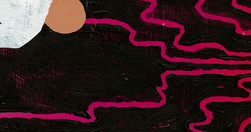
Fascinating article in Issue 14 (theme: Evolution): "It is a case of convergent evolution—where different species separately developed similar biological adaptations when faced with the same environmental pressures. Salamanders are Wake’s go-to example when asked a decades-old question in evolutionary biology: If you could replay the “tape of lif…
The Horror! The Horror! - Enquête de la Commission européenne Survey
"The multiverse may even help explain one of the more vexing paradoxes about our world, sometimes called the "anthropic" principle: the fact that we are here to observe it." - Big Bang Discovery Opens Doors to the "Multiverse"
Well, plus ca change - absolutely none of the things some BloggingPortal editors said we'd do after our meeting in January have been done, apart from our own posts and what Stefan did, which is ironic given that he told us he had no time to do anything.

Nice animation about the uncertainty principle, although it’s not mentioned by name, confirmngi the theory that chemistry is what’s left when the physicists have figured everything interesting out ;)
One guy, a camera and a whiteboard (and millions of views and a book and lots more). Sigh. I miss my super huge whiteboard.

An alternative to Popular Science's approach: "Climate change articles trigger some of the most heated discussions on Ars Technica... a scientific matter with political ramifications, it's also the focus of astroturfers (fake grassroots movements), trolls, and the willfully scientifically illiterate. At Ars, we take trolling very seriously... we…
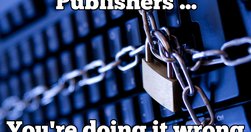
To think I almost worked on their dotcom project 12 years ago (shiver): "Lots of researchers post PDFs of their own papers on their own web-sites. It’s always been so, because even though technically it’s in breach of the copyright transfer agreements that we blithely sign, everyone knows it’s right and proper. Preventing people from making their…
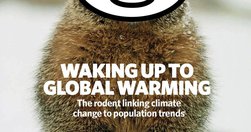
A neat approach to using social media to "improve science communication & make it more direct, responsive, and accurate". Given the huge parallels with EU communications ... "Nature editors & reporters get little status markers (aka flairs) to identify their role at Nature ... About a half-dozen keep an eye on r/science to see if any of the top …

Scientific publishing increasingly open to blogs & social media: "An important step towards this goal will be that researchers no longer view dissemination as a separate activity that takes place when research has been concluded. Instead, the research community must consider it as an inherent part of research ... the line between academic and n…

"If we want a powerful innovative culture in schools which is self-sustaining we have to empower system-aware practitioners, working ever more closely with the service users, to create it. And to avoid simply creating interesting but isolated experiments, we have to design in collaborative ways of learning and enquiry between professionals – a “pu…

" "It takes courage to talk to customers but you have to do it,” Ritson would say. “First the qualitative, then the quantitative," he repeated. Interview customers (qualitative) before you create surveys (quantitative)."
"But even a fractious minority wields enough power to skew a reader's perception of a story, recent research suggests. In one study led by University of Wisconsin-Madison professor Dominique Brossard, 1,183 Americans read a fake blog post on nanotechnology and revealed in survey questions how they felt about the subject (are they wary of the benef…
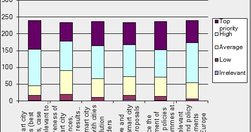
When you want to create a community, asking uses what they need is the best way to start. We launched the 1-page website, with user survey, newsletter signup and social, inside two weeks of winning the project. Everything we developed the following year (2010) was based on the results.
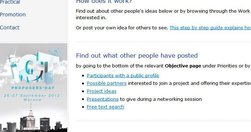
Of course, when we launched the first interactive website for the IST Event (IST 2002) we didn’t know it was a Web2.0 site. That term only appeared two years later

At one point I was editing something like 200 research project profiles, 4 editions of EUREKA News (5 languages), 7 editions of Innovation & Technology Transfer (5 languages), several annual reports and brochures, on paper and online, as well as (from 1995) designing, creating and managing their websites.Not that this was all single-handed. In tho…
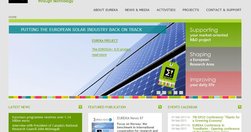
EUREKA's website was the first database-driven website by any European public organisation, and could do things other sites took over a decade to manage, such as integrating project database with journalistic content my editorial team had been producing for years.